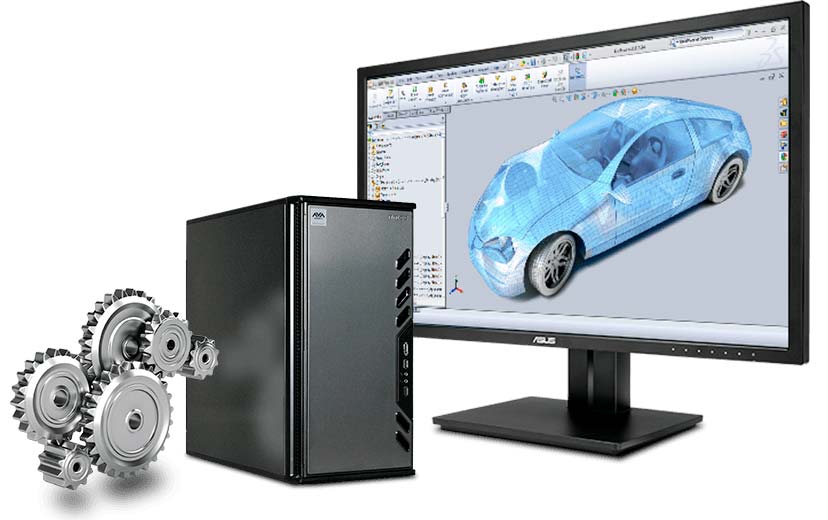When it comes to CAD, 3D modelling or animation, first thing that comes into the mind is a workstation PC. So, why it is so? Why not just an ordinary computer even if it is powerful enough? Let us to bring a bit more clarity into this question…
By dividing computers onto “ordinary” (mostly for office and home use) and workstations (designed for specific tasks), we consider that components of the latter would have unique technical specifications and a price, which, as it happens, is usually higher. Workstations, in their turn, can also be divided onto different categories, depending on the desired task to be done – CAD, 3D design and modelling, animation, audio producing etc. So, what are the main and unique characteristics of the CAD workstation, in particular, and why they are different in comparison with ordinary computers?
First off, apart from having a powerful CPU, it is an availability of the professional graphics card onboard. Secondly, 3D workstation PCs (with rare exceptions) should have a special RAM modules with error correction code (ECC) feature, the principal difference of which in comparison to DRAM, is not only to identify the errors during its work, but to correct them in order to bring robust results and not to fail during important calculations. The other important characteristics are reliability and system failure tolerance, which again increases the guarantee that results of your professional work, will be sustainable and won’t be lost (a serious 3D rendering project might take days and even weeks to accomplish).
nVidia and AMD professional graphics cards
Professional graphics cards for 3D workstation PCs are available from major manufacturers: NVIDIA, with their Quadro and Quadro FX cards and AMD (formerly ATI) with FirePro accelerator. These cards are specially designed, optimized (along with the drivers) and adapted for specific needs and computational power, which is required for professional graphics solutions. For example, these cards have a double precision float computations and display support for professionals. Optimization of the drivers also gives the opportunity to delegate part of the CPU load to GPU and gives access to some features that are not available in commercial products, which is also allows increasing the performance of the system as a whole.
Certification
Certification is another key factor for the professional 3D workstation PC. Most of the time, certification is done by the developer of the software that will be used with a particular model of the workstation. Computer is tested for full compatibility with software and on reliability and failure tolerance. Although, certification increases the cost of the workstation computer quite substantially, these expenditures are totally feasible, because the work that will be done on such stations could be so important, that any hardware failures or errors in the results of computation may turn out with bigger and unacceptable financial losses.
